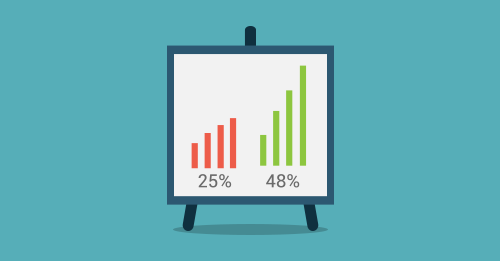
Creating and implementing a successful email marketing campaign can take a great deal of time, trial and error. Is the email informative? Does it include an attractive offer for your audience? How about your unsubscribe rate? Is it too high and are you struggling to understand why? Read on to find out more about creating a successful email campaign with low unsubscribe numbers.
The role of the unsubscribe button
Put simply, the role of the unsubscribe button is to cleanse your database. Those who are interested in you and your products or services will continue to engage and interact work you. Those who are not, will unsubscribe. This could be for a number of reasons – your services are no longer required, a person may have moved to a different job or could even have a brand new email address. With all this, it’s important to consider the number of unsubscribers you may be seeing – the more unsubscribed you have, the more damage you’ll make for your sender reputation.
What is the average unsubscribe number?
You may be wondering what is the average unsubscribe rate for emails? Many businesses choose to ignore their email unsubscribe figures – this is the biggest mistake any business can make. A high unsubscribe number can tell a business in a fairly certain way that the audience is not interested in the message you try to convey, and that they have essentially switched off from your business. In turn, this can cost you dearly, in both sales and reputation. With time, your emails could be going to your audience’s spam boxes, which could have a detrimental effect on your business.
Generally, the average unsubscribe number is 0.5%. Anything below this is considered to be very effective. If you consistently lose more than this figure, it may be time to improve and work on your campaigns. Look at the design and consider refreshing your template, consider the tone of your content and you could even send out a survey to ask for feedback. Take this into account to improve your average unsubscribe rate for email campaigns. With the improvements made, you may be looking at a new, lower rate of 0.2% which is considered a highly successful campaign.
How to calculate unsubscribe rate?
Your chosen email campaign platform will be able to calculate your unsubscribe number for you – this way you are easily able to understand the data. This metric is measured by dividing the number of people who unsubscribed with the number of emails sent and then times this figure with a hundred. This is the method you can use to calculate other aspects of your email campaigns such as the click through rate, bounce figure or the number delivered. Knowing how to calculate these figures manually can give you the confidence to know that the figures provided are correct.
Decrease your unsubscribe figure
There a few ways you can decrease your unsubscribe figure. You should take the time to segment your subscribers into relevant lists – this way, you can send targeted and relevant emails depending on the list. For example, if you have an offer for subscribers who are repeat customers, then a tattered email can be sent to those in this list. The subscribers in each list should be engaged in your activities and are therefore much less likely to unsubscribe from your emails. With a segmented email database, you should have higher click through rates, open rates and higher revenue.
Another consideration is the frequency of your emails. Send to many and you risk being marked as spam and send too little, you risk being forgotten. This is another benefit of asking your subscribers for feedback. You should also be realistic in terms of the quality of emails you can send with regards to time. Email campaigns require a great deal of research, effort and quality so sending too many may impact some or all of these aspects.
Have you also thought about the subject line? This may be an oversight, however the subject line you choose is imperative to unsubscribers. A subscriber who is constantly emailed with a subject line they deem full or irrelevant is almost certainly going to unsubscribe. Keep text relevant, enticing and personal. It should also be short, no more than five words and really think about what would make a reader excited about your business.
The final way to decrease unsubscribers is by offering a double opt-in – this way you’ll know that your audience is really interested in what you have to offer and will be much less likely to unsubscribe. Double opt-in simply means that a user will include their email address to the contact form on your website, they’ll then receive a confirmation email asking them to click a link to be taken back to the site. This shows that a user is interested and invested in you.
You may have thought that understanding your unsubscribe rates were pointless but in actual fact, they’re considerably important for securing sales, reputation and trust. Understanding how to calculate the figures manually is an added benefit as well as knowing what your subscribers wants to read. You should also consider personalized emails as well as the double opt-in do that users really do feel that they’re at the forefront of your marketing strategy.
With patience and research, you can work on decreasing your average unsubscribe rate for email marketing and really make the most out of your exciting email campaigns.
